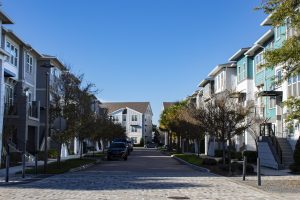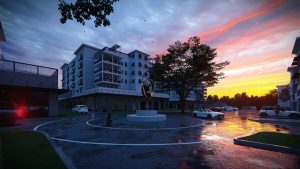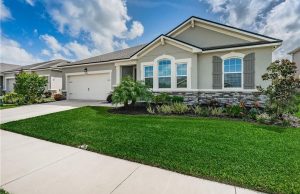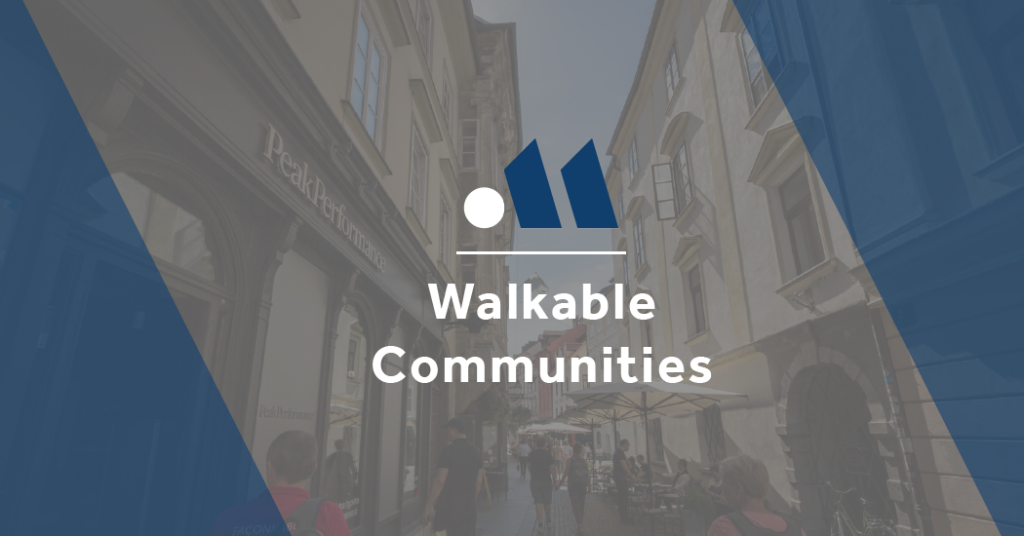
The term walkable community is a phrase frequently used in urban planning, public policy, environmental studies, and even medical studies. The experts and studies indicate that a walkable community benefits the economy, the environment, and our health. But what does it mean for a community to be walkable, and how do we design to make sure our communities are walkable? Below, Monta Consulting & Design provides an in-depth look at walkable communities and why we should strive to build them.
What is a Walkable Community?
A walkable community encourages pedestrian activity through infrastructure and design. Studies indicate that most people will choose walking over vehicle transportation if the walk is 5 minutes or less. Most people choose a vehicle over walking if the walk is 15 minutes or longer. The diagram from the Congress for New Urbanism shows the distance ranges below:

It is interesting to note early western civilizations designed their cities and town centers around this notion primarily because there were limited modes of transportation. As planners and designers strive to help society achieve the highest quality of life, they often refer to history for strategies. The challenge today is determining what a walkable community should consist of and how to design it with modern technology and transportation methods.
Characteristics of a Walkable Community
There are many elements that work together to create a community that is walkable and achieves the “5-minute walk” goal:
- Mixed-Use: Mixed-use development is a practice of master planning that provides more than one use or purpose within a shared building or parcel of land. This concept combines housing, commercial, and recreational needs through shared infrastructure. In addition, mixed-use development is focused heavily on pragmatic design. By integrating mixed-use development, patrons can access everyday essential services and amenities on foot.
- Increased Density: Increased density usually has more flexible land use and closer destinations. Some studies indicate that people feel encouraged to walk when other people in their neighborhood are also walking. This means that someone is more likely to walk in an area with increased density versus a suburban area because there are more pedestrians.
- Town Centers: Successful walkable communities typically contain a centralized location where public services and cultural events occur. Town centers bring about a sense of being connected and increase the engagement of the residents.
- Safety: People are more likely to choose to walk if they feel safe. Elements such as wide sidewalks or pathways and increased crosswalks encourage walking because the safest path is pre-determined for the walker by design.
- Shared Public Space: Master Planning to include shared public spaces such as gardens and parks creates an outdoor destination for walkers. Successful outdoor planning even provides scenic pedestrian shortcuts, making their walk shorter and more enjoyable.
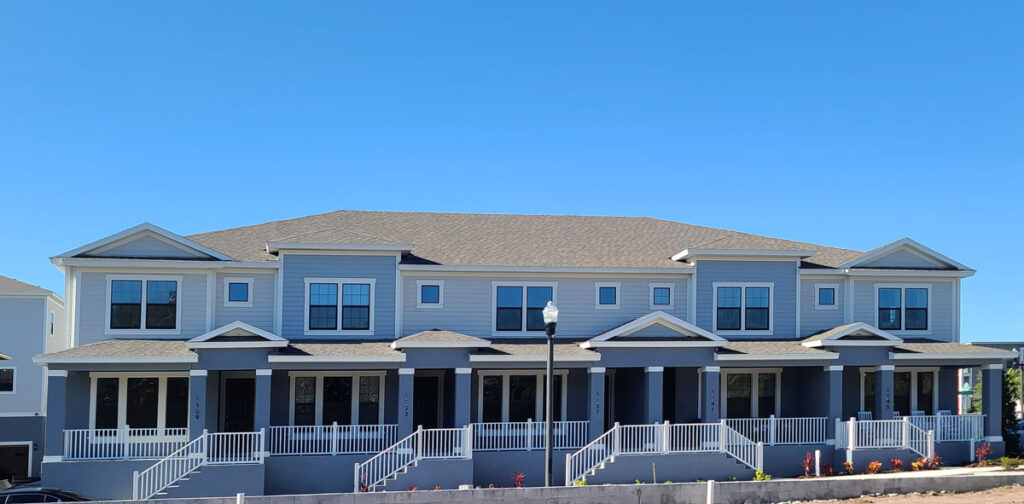
Retrofitting Existing Communities
With only 34% of cities in North America considered walkable, how can we make more cities walkable? The 34% is overstated when you consider that only limited sections of those cities are truly walkable. The truth is, if the physical infrastructure is available to accommodate vehicles, there is already enough room to incorporate pedestrians. Methods used to convert communities to walkable include:
- Making streets one way versus two way
- Removing parallel parking
- Adding crosswalks
- Widening sidewalks
- Adding a bike path
- Rerouting high-speed highway systems
- Adding pedestrian bridges
The most challenging changes to make will be increasing densities and developing mixed-use. With many cities and towns aging, it is a prime time to revitalize with walkability in mind.
Benefits of Walkable Communities
Creating walkable communities may seem out of reach, but there are many benefits for the people living in walkable neighborhoods. The most immediate benefit is improved physical health through increased activity. The reduction in vehicle traffic and the use of green spaces reduce carbon emissions, improving the air quality and environment. Applying the principles of walkability to a master plan also results in a more economically sustainable community by reducing the infrastructure and tax burden of the residents. Lastly, the safety of walking is far superior to the safety of automobile travel. Only 17% of fatal automobile accidents involved a pedestrian. It is safe to say that number would most likely decrease if pedestrians did not have to contend with so many automobiles.
The Monta Consulting & Design team strives to design master plans that increase the health and sustainability of our communities. Making them walkable is a portion of our approach. If you would like to learn more about our master planning approach and experience, click here. Contact our team of experts today if you would like to start planning a community that equally benefits developers, the public sector, and residents.

